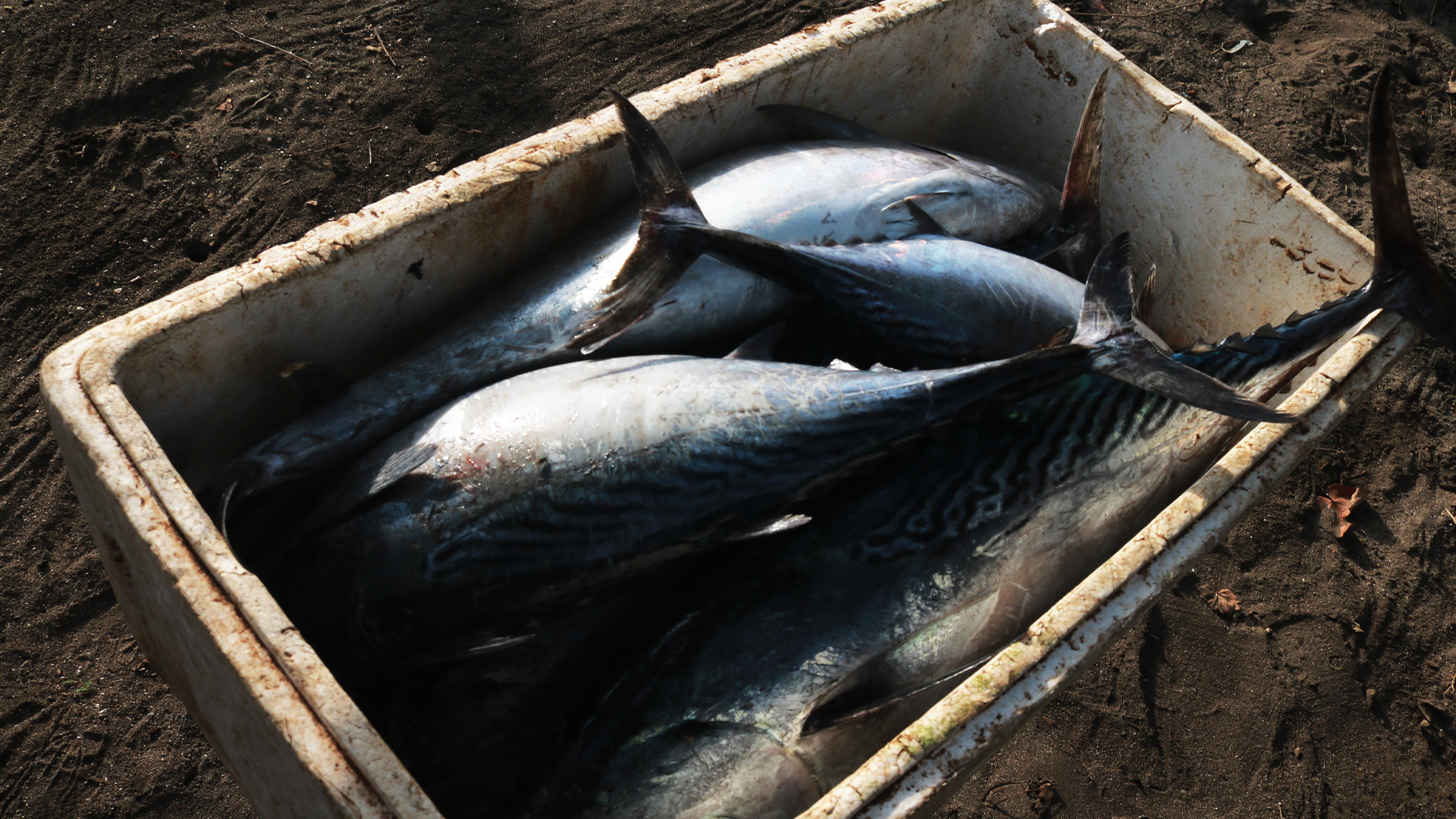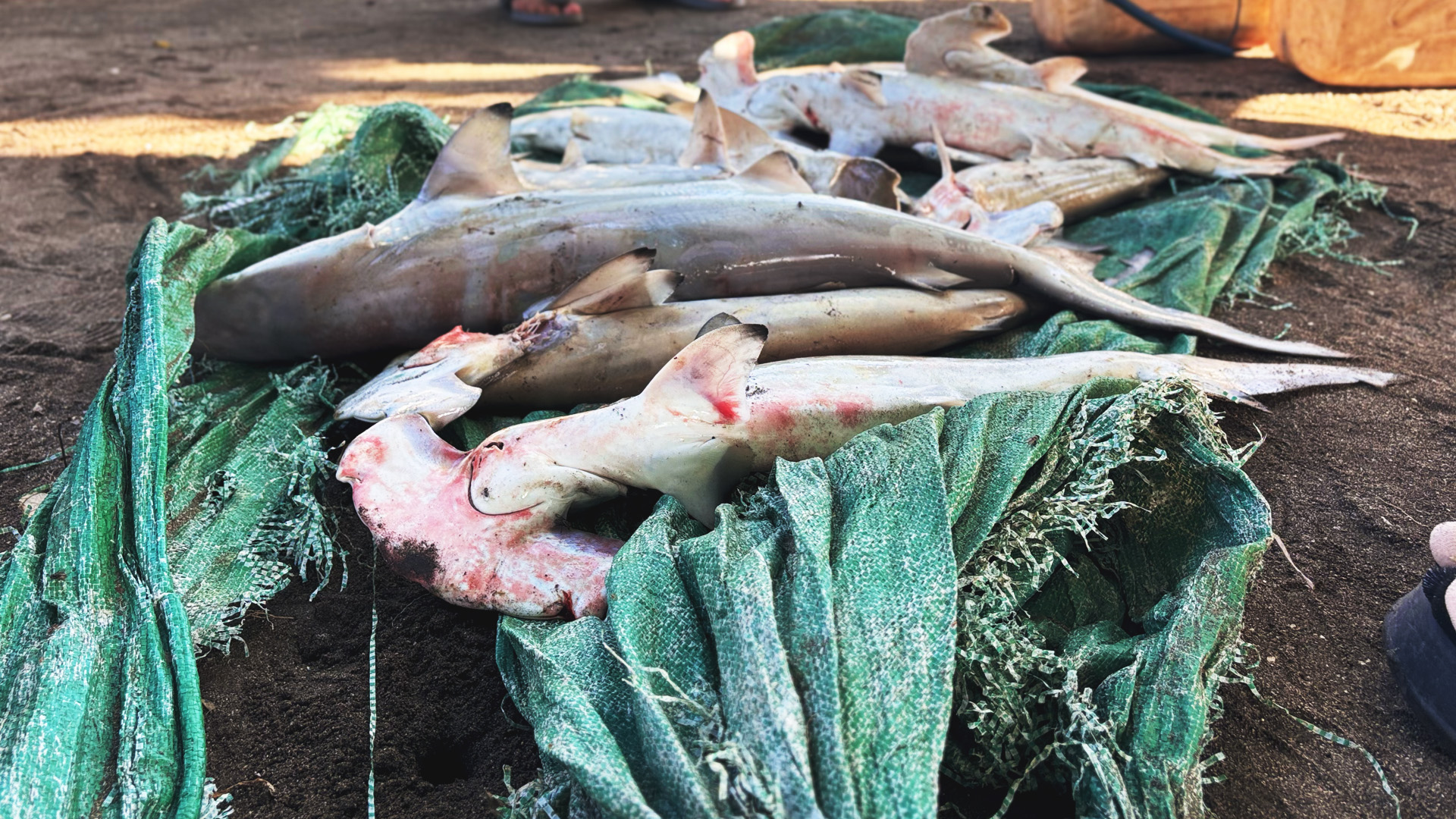What the Fishers’ Nets and Lines Reveal: Sharks, Rays, and Human Survival in Southern Sumbawa’s Important Shark and Ray Area
Lunyuk, on the southern coast of Sumbawa, is far more than just a fishing ground. It overlaps with a globally recognised Important Shark and Ray Area (ISRA), a place where sharks and rays are known to gather, breed, and migrate. This ISRA is home to several threatened species listed on the IUCN Red List. Yet these same waters that shelter vulnerable marine megafauna are also the lifeline for local fishing communities who depend on them for their daily survival.
Fisher Profile, Livelihood Dependence, and Species Composition
From our socio-economic surveys with 31 fishers in the area, just over half came from Perung, while the rest were from Emang Lestari — two coastal villages within Lunyuk district. These fishers primarily rely on small-scale gear such as gillnets, handlines, and longlines, adapting their techniques to seasonal shifts and the availability of fish. Their average age falls between 43 and 48 years, with 25–26 years of fishing experience on average. Most of their catch is sold commercially, while less than 10% is kept for household consumption, serving as an important alternative source of protein.
Their fishing targets reflect the diversity of local marine resources. Key pelagic species of economic value include Euthynnus affinis, Spratelloides gracilis, Scomberomorus commerson, Caranx ignobilis, Thunnus spp., and Rastrelliger brachysoma. Demersal species such as Gerres spp., Lutjanus spp., Caranx ignobilis, Sardinella lemuru, and Epinephelus spp. also form an essential part of their daily catch. This illustrates that fishing in the region is not only a means of income but a way of life — sustained by experienced, older generations who have long depended on the sea for both survival and identity.

Giant trevally (Caranx ignobilis) caught by longlines. Photo © M Said Ramdlan
The five most frequently landed elasmobranch species, in descending order, were Sphyrna lewini, Carcharhinus sorrah, Loxodon macrorhinus, Rhynchobatus australiae, and Mustelus spp, with Sphyrna lewini representing the highest landings and Mustelus spp the lowest among the group. Analysis of their size distributions, based on catches from gillnets and longlines, revealed significant overlap between juvenile and mature size classes, indicating potential impacts on population sustainability. Sphyrna lewini (scalloped hammerhead) ranged from 48–154 cm TL and 30–116 cm FL, representing predominantly subadult to adult individuals. C. sorrah exhibited the broadest size variation (37–147 cm TL, 29–119 cm FL), reflecting a mix of immature and mature specimens. L. macrorhinus, ranked third, was relatively smaller, with 66–105 cm TL and 54–90 cm FL, primarily within the subadult range. The fourth species, Rhynchobatus australiae. (bottlenose wedgefish), a critically endangered species, had 47–157 cm TL and 44–148 cm FL, indicating capture of both juvenile and adult cohorts. Finally, Mustelus spp, in fifth place, recorded 59–135 cm TL and 52–127 cm FL, indicating exploitation across multiple size classes. These findings suggest that gillnet and longline fisheries exert pressure on critical life stages of threatened and vulnerable elasmobranchs, particularly Sphyrna lewini and Rhynchobatus australiae.

Juvenile scalloped hammerhead (Sphyrna lewini) caught by longlines. Photo © M Said Ramdlan
Balancing Conservation and Livelihoods
The dual reality of this ISRA, harbouring threatened species while supporting small-scale fisheries — presents a complex challenge. On one hand, these waters are critical habitats for globally significant shark and ray populations; on the other, they provide the primary source of income and food security for the fishers of Perung and Emang Lestari. The overlap between juvenile and adult catches highlights the urgent need for adaptive management that does not simply exclude fishers but instead incorporates them into conservation strategies.
A Pathway Forward
Moving forward, a collaborative approach that combines science, policy, and community-driven incentives will be essential. Implementing incentive-based conservation schemes — where fishers are rewarded for sustainable practices, selective gear use, or reporting critical species—can create shared benefits for both biodiversity and people. Education, co-management agreements, and market-driven incentives have the potential to transform the narrative from extraction to stewardship. The story emerging from Lunyuk’s ISRA is not only about what the fishers’ nets take from the sea but also about what they can help to preserve for generations to come.
